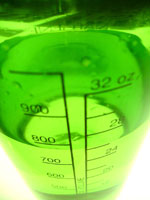
| Study Says If You're Alive, You Have BPA in You | 7 September 10 |
 BPA is detectable in the urine of 91% of Canadians, with Canadian teens having the highest concentrations of BPA and the elderly the lowest, according to Statistics Canada's "Canadian Health Measures Survey" released August 2010. BPA is detectable in the urine of 91% of Canadians, with Canadian teens having the highest concentrations of BPA and the elderly the lowest, according to Statistics Canada's "Canadian Health Measures Survey" released August 2010.Tracey Bushnik, of Statistics Canada's Health Analysis Division, highlighted that for the first time Canadians had "baseline information against which we can study trends and track what is happening with respect to bisphenol A exposure." BPA is widely used in plastic water jugs, soft drink cans, hockey helmets, mobile phone housings, computers, car bumpers, carbonless papers and other consumer products. People are exposed primarily through food packaging or handling of products containing BPA. Over 130 studies during the past decade have linked even low levels of BPA to serious health problems, breast cancer, obesity and the early onset of puberty, among other disorders. The Statistics Canada study was also the first national measurement of lead levels in three decades. Average lead concentration for people aged six to 79 measured between 2007 and 2009 was one-third the concentration measured in the 1978-79 Canada Health Survey. "The levels of lead and bisphenol A in Canadians' bodies are a study in contrasts. The fact that kids today have a fraction the lead levels that their grandparents do is a clear sign that government regulations are working," explained Dr. Rick Smith, Executive Director of Environmental Defence. View August 16, 2010 Reuters articleView August 16, 2010 Environmental Defense press release View August 16, 2010 CBC News article View August 16, 2010 CBC News article View Statistics Canada, Canadian Health Measures Survey Source: Reuters |
|
 Print version Print version |
Top |
